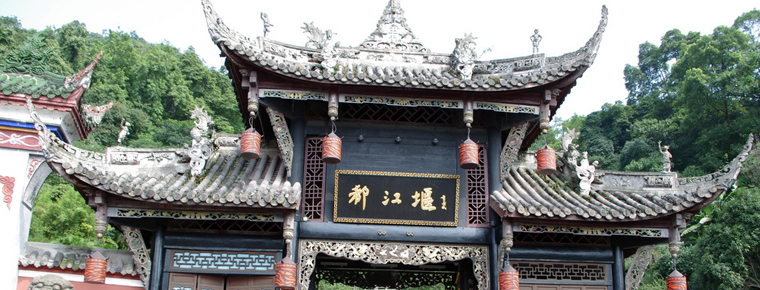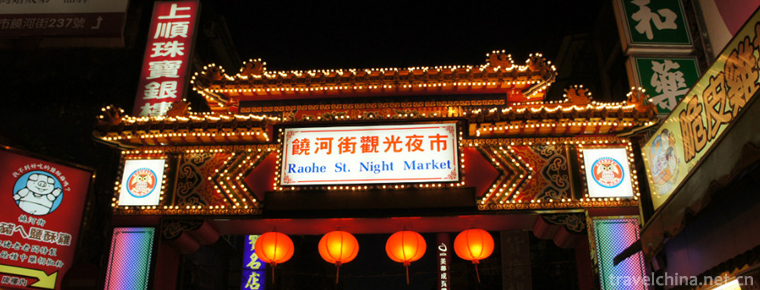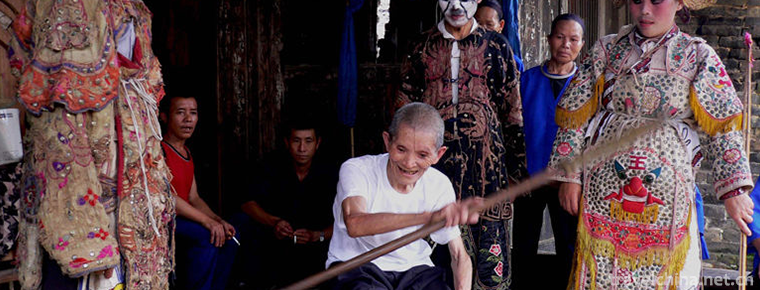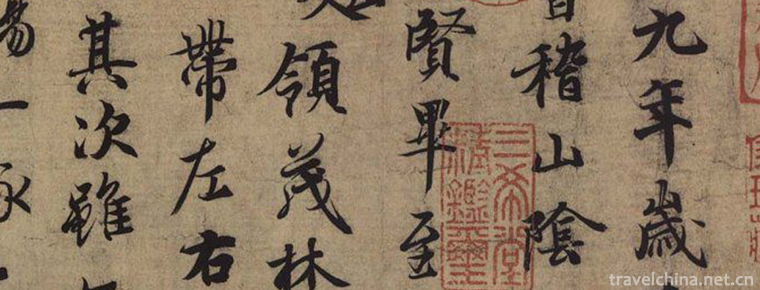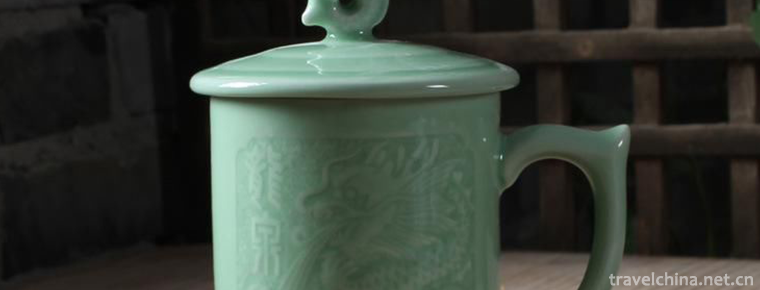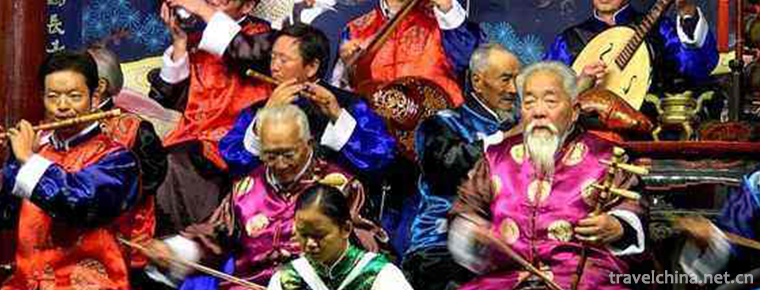Mountain Lushan
Mount Lu, also known as Kuang Shan and Kuang Lu, is located in Mount Lu City, Jiujiang, Jiangxi province. It is located between the east longitude 115 degrees 52 '- 116 degrees 8', north latitude 29 degrees 26 '- 29 degree 41'. East Nestle to Wuyuan and Poyang Lake, South to Pavilion of Prince Teng, West to Beijing Kowloon Railway Datong pulse, North pillow surging Yangtze River. It is about 25 kilometers long and 10 kilometers wide. The main peak of Hanyang peak is 1474 meters above sea level. The mountain is oval and typical Horst type block mountain.
Mount Lu is famous for its male, unusual, dangerous and show. It is known as . It is a world cultural heritage , a world geological park, a national key scenic spot , a national AAAAA-class tourist attraction, ten famous mountains in China, the ten most beautiful mountains in China, a national key cultural relic protection unit, four summer resorts in China , and the first batch of demonstration sites of national civilized scenic spots.
Mount Lu has 171 ancient peaks. Among the peaks, there are 26 hills, 20 gully valleys, 16 caves, and 22 strange rocks. Water flow in the valley development cracks, forming many rapids and waterfalls, 22 waterfalls, 18 streams, 14 lakes and lakes. The most famous Triassic Spring Falls, falling 155 meters, has the beautiful phrase "flowing down 3000 feet, suspected to be the nine days of the Milky Way".
The earliest written record of the name of Lushan appears in Shangshu Yugong: "Minshan Yang, as for Hengshan. Over Jiujiang, as for Asahara. " Among them, "Fu Shen Yuan" is the alias of Mount Lu; in addition, Mount Lu also has the aliases of Nanzhang mountain and Emperor Zi Zhang. And the earliest written in the name of "Lushan" is Sima Qian's "Historical Records": "Yunan climbed Lushan, Guanyushu Jiujiang."
"The Book of Songs, Xiaoya, Xinnan Mountain" has "Zhongtian Youlu", while "Guoyu Chuyu" records the location of Lushan in the Warring States Period called "Luyi."
In Sun Fang's Lushan Fu in the Jin Dynasty, "Lushan Mountain is located in the south of Xunyang County, and the town of Jiujiang is also located in the south of Xunyang County. Also on Mount Lu geography.
Lushan is located in Jiujiang City, Jiangxi Province, Wuyuan, Poyang Lake in the east, Tengwang Pavilion in the south, Jingjiu Railway in the West and the Yangtze River in the north. It is a horst-type fault-block mountain with a length of 29 km in the north and south, a width of 16 km in the East and west, and an area of 302 square km. It lies between 115 52 116 8 in the east longitude and 29 26 29 41 in the North latitude. 25 to 1473.8 meters above sea level. 171 peaks have been named from ancient times, and the main peak is 1474 meters above sea level.
Lushan landform landscape is a kind of multi-genesis complex landform landscape, which is composed of fault block mountain tectonic landform landscape, ice erosion landform landscape and flowing water landform landscape.
The Lushan fault block mountain was formed in the Late Cretaceous when the ancient Poyang Lake was formed. It was not until the Paleogene and Neogene Himalayan orogeny that the magnificent and steep Lushan fault block mountain was formed.
Three million years later, when the Quaternary Great Ice Age approached, Lushan Mountain had produced four glacial epochs. This kind of oceanic Piedmont glacier had strong planed erosion. On the basis of the high fault-block mountains, a series of glacial erosion landforms were formed, including ridges, ice buckets, ice cellars, U-shaped valleys and horn peaks.
In the post-glacial period of 10,000 years, due to the abundant rainfall and the development of water system in Lushan Mountain, the tectonic landforms and glacial erosion landforms of fault-block mountains were strongly reformed under the action of strong flow erosion, forming a series of unique flow landforms, fault cliffs, glacial ridges turned into steep peaks and lavas, and U valley formed new peaks and valleys. Valleys, steep cliffs, magnificent, laid the foundation for the formation of a large number of waterfalls.
Climate condition
Mount Lu is late in spring, short in summer, early in autumn and long in winter. According to the records of the past years, the temperature in Lushan is only 32, the lowest is - 16.8, and the annual average is 11.4. It can be seen that the temperature in Lushan is moderate. So that the four seasons, according to the seasonal average calculation difference is more normal: spring is 11.5 degrees Celsius, summer is 22.6 degrees Celsius, autumn is 17.4 degrees Celsius, winter is often around 1 degrees Celsius.
Because the top of Lushan Mountain is in the high altitude zone and surrounded by rivers and lakes, the moist air flow is blocked by the mountain in advance, and it is easy to make clouds and rain. Therefore, Mount Lu has abundant rainfall, the annual average rainfall is 1917 millimeters, and the annual average rainy day is 168 days. There are more cloud and fog in Mount Lu, and the average foggy day is 192 days. What is more strange is that the clouds and fog in Mount Lu all year round are not yet changeable, and add wonderful scenery to Mount Lu. The main source of Mount Lu's water is meteoric water. Under the condition of abundant rainfall, there are more than 90 peaks and ridges in Lushan. Because of crustal movement and glacial denudation, some peaks and ridges intercalated with canyons naturally form steep walls and deep cliffs, which form numerous waterfall beds. In addition, water sources continue to form a large number of spectacular waterfalls throughout the year.
Mountains in Lushan are all above 1,000 meters above sea level, the highest peak of Hanyang Peak is 1,474 meters above sea level, and the mountains are densely forested, surrounded by rivers and lakes, coupled with perennial rainfall, air humidity, so that the summer temperature difference between the mountain and the lower mountain. In midsummer every year, the highest temperature in the Poyang Lake Basin can reach over 39 degrees Celsius, while the average temperature in summer on the mountain is only about 22.6 degrees Celsius, and the temperature in the morning and evening is usually between 15-20 degrees Celsius.
The valley system of the Mount Lu area is a self made system, which takes Mount Lu as its source and flows to rivers and lakes. The mountain top and the wide valley communicate through the river attack, and the V-shaped Valley falls into the deep valley on the side of the mountain. In Lushan scenic area, many dams and lakes are built by seizing bends, and water supply and drainage systems are built to regulate water use, or to generate electricity to supplement power supply. At the same time, water scenery tourism is increased.
Mount Lushan has beautiful scenery and profound cultural connotation. It combines famous mountains of education, culture, religion and politics. From Sima Qian's "Nandeng Lushan, Guanyu Shushu Jiujiang", to Tao Yuanming, Zhaoming Prince, Li Bai, Bai Juyi, Su Shi, Wang Anshi, Huang Tingjian, Lu You, Zhu Xi, Kang Youwei, Hu Shi, Guo Moruo, and other literary giants, more than 1,500 people visited Lushan, leaving behind the establishment of more than 4,000 poems, songs and fu; Chen Yunhe's poetry works "Lushan" said that "the history of the Triassic springs straight down Qingshi, five old peaks towering ancient poetry, immortal cave deep ambition dragon head cliff soaring sentiment, with a mouth difficult to express feelings, Lulin Lake converged reality, flower path through the past generations of celebrities, Tianchi read the vast world, White Deer body in the academy east forest shade dyed Buddhist temple," can be seen Chiang Kai-shek's residual footprints. I admire Mao Zedong's residence in the old site, and the famous works of the world.
In the seven years of Chun Xi in the Southern Song Dynasty (1180), Zhu Xi, the great philosopher, revived the White Deer Cave Academy. He pioneered the education of lecturing in China. With the traditional Confucian political and ethical thought as the pillar, he established a huge "Neo-Confucianism" system. Since then, "Neo-Confucianism" has become the main idea of China's feudal society, affecting China's 700-year historical process. By the beginning of the last century, the construction of Lushan villas with 25 national styles in the world, from Hu Xianyu's creation of China's first subtropical mountain botanical garden to Li Siguang's "Quaternary Glacier" theory. The Mount Lu botanical garden is well domesticated and grown in subtropical and subtropical areas due to its terrain barrier. In 2009, the Mount Lu botanical garden was awarded the first China's world record society's earliest Subtropical Botanical Garden. Li Siguang, a Chinese geologist, proposed that glaciers developed in the Lushan Mountains during the Quaternary, which attracted international academic attention. Therefore, Mount Lu is an important place for natural science research.
Myths and legends
There is a legend, as early as in the early Shang Dynasty, there is also said that in the time of King Zhou Wei-lie, there was a Kuang-secular gentleman in Lushan to learn Taoism and immortality. It is said that the word "Jun" is filial piety, and some books are called Kuang Yu, and Zi Zi is filial piety. Judging from the conjunction of Chinese traditional names and characters, its name is Yu, which is more reasonable. Folk characters are misinterpreted, vulgar and continuous two-character pronunciation is also the pleasure of hearsay. But the popular name is called him vulgar. For convenience, it is based on familiar terms. In addition, there are also called vulgar custom, this legend is due to the name of the mountain and imagine its people, to place name, surname, but also in line with the ancient practice. As for his exact surname, it is natural to be investigated. It is said that Kuang Su learned about the deeds of the king in Mount Lu. Therefore, Zhou often asked him to help him out of the mountains, and the vulgar secular evasion had repeatedly sneaked into the mountains. Later, the custom was lost. Some people say that he has gone to immortality, which is naturally nonsense. Later, people beautify the matter and call it "the fairies of the gods". This is the name of Mount Lu. Because the name of "Cheng Xian" is Kuang, so it is also known as "Kuang Shan" or "Kuang Lu". In the Song Dynasty, in order to avoid the taboo of Zhao Kuangyin from the Song Dynasty, he changed his name to "Mount Lu".
Another legend is that there was a Mr. Fang Fu during the reign of King Wu of Zhou Dynasty. Together with Lao Tzu and Li Er, they rode a white donkey into the mountains to refine the alchemy. Both of them also became immortals. Only an empty lug was left on the mountain. People call this "man to Lucun" mountain, Lushan. "Cheng Xian" is also called "Fu Shan" because of its name. But Lao Tzu and King Wu are not the same. This is also a myth.
The third kind of legend is still the story of Mr. Kuang Po, but the time is later and the plot is somewhat different. It is said that Kuang's father, King Dongye, once worked with Wu Rui, the capital of Yangling, to assist Liu Bang to calm the world, and King Dongye died in the middle of an unfortunate journey. In order to commend his meritorious deeds, the court feuded the son of King Dongye to Kuang Hui in Wuyang (Wu, Yinxiao, part of today's Duyang County), and called him "Lu Jun". There were seven brothers who were fond of Taoism. They all went to the mountains beside Duyang Lake to learn Taoism and seek immortality. This mountain where the brothers of Yue Lujun learned Taoism and sought immortality is called Lushan Mountain.
From the mid-20th century, Lushan became the "summer capital" of the national government, to Lushan as the embodiment of the status of a famous political mountain.
Since the 21st year of Guangxu in the Qing Dynasty (1895), Lushan has been a famous summer resort at home and abroad with villas built in more than 20 countries, such as Britain, Russia, the United States and France. At the same time, a large number of foreign churches, banks, stores, schools, hospitals and municipal councils have emerged in Lushan, which has become a unique representative of western culture affecting China's hinterland.
In the summer of the twenty-sixth year of the Republic of China (1937), Zhou Enlai twice went to Lushan to negotiate with Chiang Kai-shek. He put forward the famous "Declaration of Cooperation between the Central Committee of the Communist Party of China and the Kuomintang" to promote public cooperation against Japan and open up one of the main battlefields of Anti-Fascism in the world. On July 17, 1937, Chiang Kai-shek delivered an important talk on the Anti-Japanese War in Lushan.
From July to August 1959, from August to September 1961, and from August to September 1970, the Central Committee of the Communist Party of China held three conferences in Lushan which had great influence on China's socialist construction.
From 1959 to 1961, Mao Zedong wrote two poems dedicated to extolling the magnificence and beauty of Mount Lushan and its historical and cultural magnificence.
The best viewing time is summer. Mount Lushan is located in the eastern monsoon region of China's subtropical zone, facing rivers and lakes, with deep mountains and valleys. It has distinct mountain climate characteristics. The average temperature from July to September is 16.9 degrees centigrade, and the highest temperature in summer is 32 degrees centigrade.
Tourism traffic: Lushan tourism traffic is very convenient, air, water, railway, highway has formed a three-dimensional transportation network Lushan.
Aviation: Nanchang Changbei International Airport, Jiujiang Lushan Airport, every day flights and Beijing, Shanghai, Shenzhen, Chengdu, Kunming, Qingdao, Xiamen, Haikou, Shantou, Wenzhou, Zhuhai, Fuzhou, Jinan, Wuhan, Xi'an and other large and medium-sized cities. Air and railway ticket sales have been nationwide computer network, can be sold throughout the country plane, train tickets.
Waterborne: Nearly 20 liners are docked at Jiujiang Port every day along the Yangtze River.
Railway: It can reach Jiujiang Station or Lushan Station from Beijing-Kowloon Railway, Changjiu Intercity Railway and Tongjiu Railway.














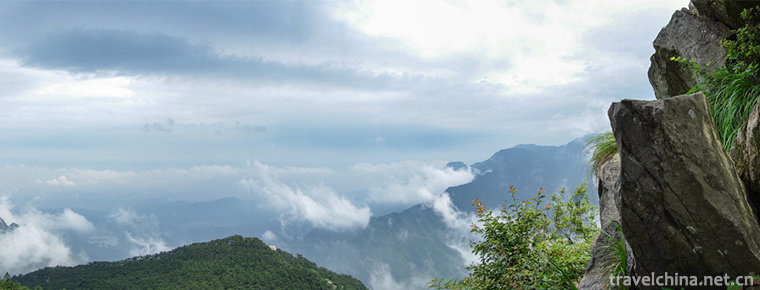
-
Raohe Street Night Market
Raohe Street Night Market is located in Raohe Street.
Views: 498 Time 2018-10-12 -
Shanghai Science and Technology Museum
Shanghai Science and Technology Museum is a comprehensive natural science and technology museum with Chinese characteristics, times characteristics and Shanghai characteristics.
Views: 510 Time 2018-12-05 -
Xinjiang Tianshan
Tianshan Mountain in Xinjiang, the eastern part of the Tianshan Mountains, is also the main part of the Tianshan Mountains and the world natural heritage. Tianshan Mountain is one of the seven major m.
Views: 181 Time 2019-02-25 -
Dong Opera
Dong Opera, one of the national intangible cultural heritage, is a local traditional drama in Liping County, Guizhou Province, Tongtong Dong Autonomous County, Hunan Province and Sanjiang Dong Autonom.
Views: 209 Time 2019-04-27 -
Chinese character calligraphy
Chinese character calligraphy has been recognized by the world for its brilliant civilization of 5000 years and its incomparable rich written records. In this vast and profound history,.
Views: 192 Time 2019-05-02 -
Firing Techniques of Longquan Celadon
Longquan celadon firing technology, the traditional ceramic technology of Longquan City, Lishui, Zhejiang Province, is one of the national intangible cultural heritage..
Views: 118 Time 2019-05-14 -
Manchu Ergui wrestling
Ergui wrestling is a traditional Manchu folk dance spread in the urban and rural areas of Longhua County, Hebei Province. It was formed in the late Qing Dynasty (around 1820 A.D.) and flourished betwe.
Views: 103 Time 2019-05-17 -
Baisha Xile of Naxi Nationality
Naxi Baisha Xile is also known as "Xiaoli at breaking time", "Xiaoli at breaking time", "Xili at breaking time", "Xili at breaking time" and "Xie Li at bre.
Views: 242 Time 2019-06-06 -
Xinyang Folk Songs
Xinyang Folk Song is the traditional folk music of Xinyang City. Xinyang City, known as the hometown of song and dance in Henan Province, has a rich stock of traditional folk music, dance and other tr.
Views: 311 Time 2019-07-06 -
Chengdu national beauty and heavenly fragrance Water Park
Chengdu national beauty and heavenly fragrance water park is the world's first and largest standard in Asia. It is also the first water theme park with the most comprehensive facilities in Southwest China..
Views: 148 Time 2020-10-17 -
Administrative division of Yibin
Yibin City has 10 county-level administrative divisions (Municipal District 3, county 7), 136 township level administrative divisions (street 14, town 105, township 17). It covers an area of 13271 square kilometers and has a population of 5.52 million. Yibin Municipal.
Views: 319 Time 2020-12-18
